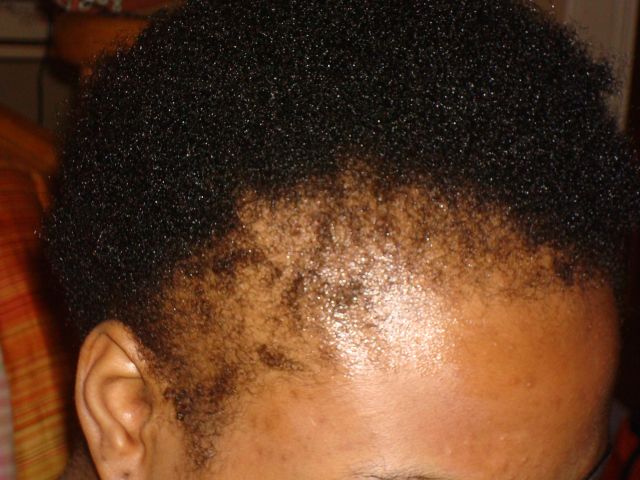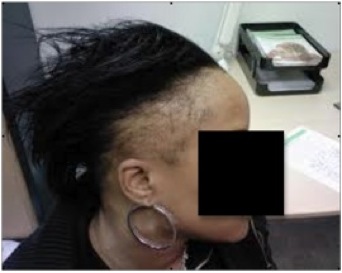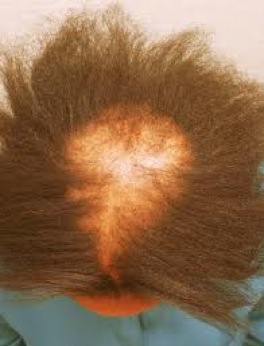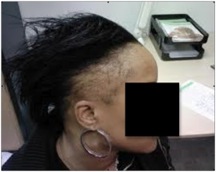
WHAT IS TRACTION ALOPECIA?
Traction alopecia manifests in a gradual loss of hair as a result of constant or frequent abrasive pulling on the hair. Over time, hairstyles that require the hair to be pulled with such force will cause noticeable thinning along the periphery of the scalp. This includes the anterior and posterior hairlines, as well as behind the ears.
|
|
A condition related to traction alopecia, called central cicatricial centrifugal alopecia (CCCA), causes hair loss at the center of the scalp. CCCA is a culmination of traction alopecia and the use of harsh chemicals, such as relaxers, dyes, and bleaches. These chemicals deteriorate the keratin structure of the follicle, weakening its tensile strength. The frequent use of heated appliances can also exacerbate the condition.
HAIRSTYLES THAT CAUSE TRACTION ALOPECIA
Specific popular hairstyles worn by African American men and women are known for causing peripheral hair loss. This includes:
- Braiding and Corn Rows: A hairstyle that involves braiding the hair, sometimes weaving hair additions into the existing hair, which is tightly knotted at the scalp. The braids may hang loose, or be woven into taut columns of French braids, known as cornrows.
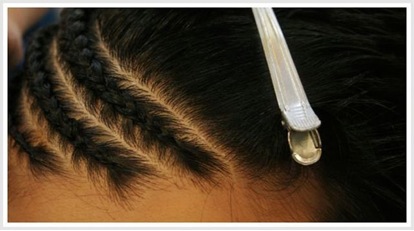
- Weaving: Hair additions added all over the head to give the illusion of fullness and/or length. It provides similar coverage to a wig, but is more long-term. Weaving can be achieved through braiding, bonding, fusion, or netting. Some of which use braid-threading and some of which use glue. Both braiding and glue are damaging to the hair.
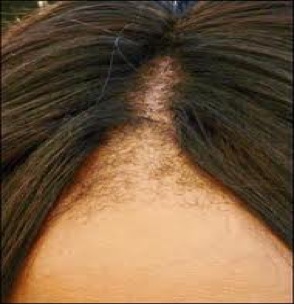
- Extensions: Similar to weaving, but involves only the lower half of the scalp, usually to add length.
- Ponytails: This hairstyle gathers the hair into one or more tight bunches, held in place by a hair-tie or rubber band.
- Barrettes: An often decorative accessory used to hold pieces of the hair in place.
CURING TRACTION ALOPECIA
The simplest cure for this condition is to take preventative measure by avoiding the above-listed hairstyles as much as possible. However, once traction alopecia has set in, there is not reversing its affects. Some solutions include:
- Wearing a wig: Interspersing a wig with traditional hairstyles might slow down the onset of traction alopecia, and would certainly mask the condition in the case of dramatic hair loss.
- Rogaine: An FDA-approved drug used to stop hair loss and possibly stimulate growth. However, its ability to reverse hair loss along the hairline has proven discouraging.
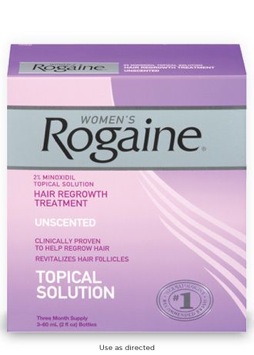
- Hair transplant: This is a permanent solution to all types alopecia. Follicular Unit Extraction is an ideal method for African American women to reverse hair loss. This form of surgery has the capacity to better-navigate the excision of curled follicles and its minimized scarring rates.
If you are interested in the subject of ethnic hair growth and care, click here to read more.
How Hair Transplant Surgery Reversed This Patient’s Traction Alopecia
This female patient sought Dr. U’s help to restore a patch of missing hair on her left temple. Due to how large it had become, she tried to keep it concealed by constantly wearing her hair down. But she eventually decided to choose an FUE (Follicular Unit Extraction) hair transplant surgery to fill in this bald area.
With the use of special microsurgical punch instrumentation (UGraft ™) that he himself developed, Dr. U removed a supply of 200 healthy donor follicles from other regions of the patient’s scalp. These grafts were then inserted into her left temple.
The patient is now able to confidently wear her hair up without fear of exposing the previous area of hair loss.
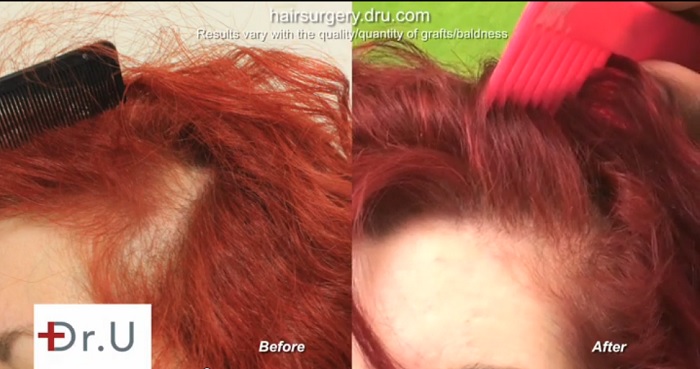
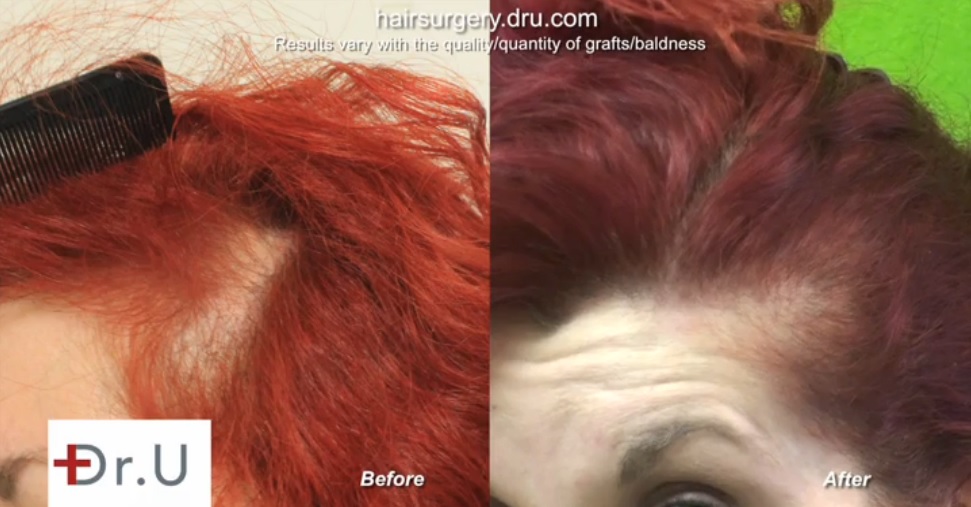
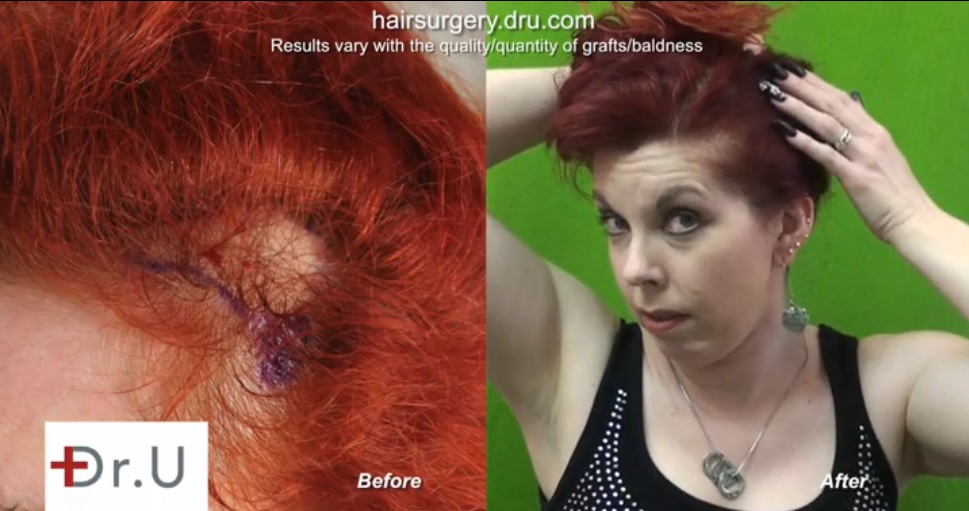
Learn more about her procedure here.
Understanding the Basics of Follicular Unit Extraction
To learn more about FUE hair transplantation and how it works, watch these videos.

